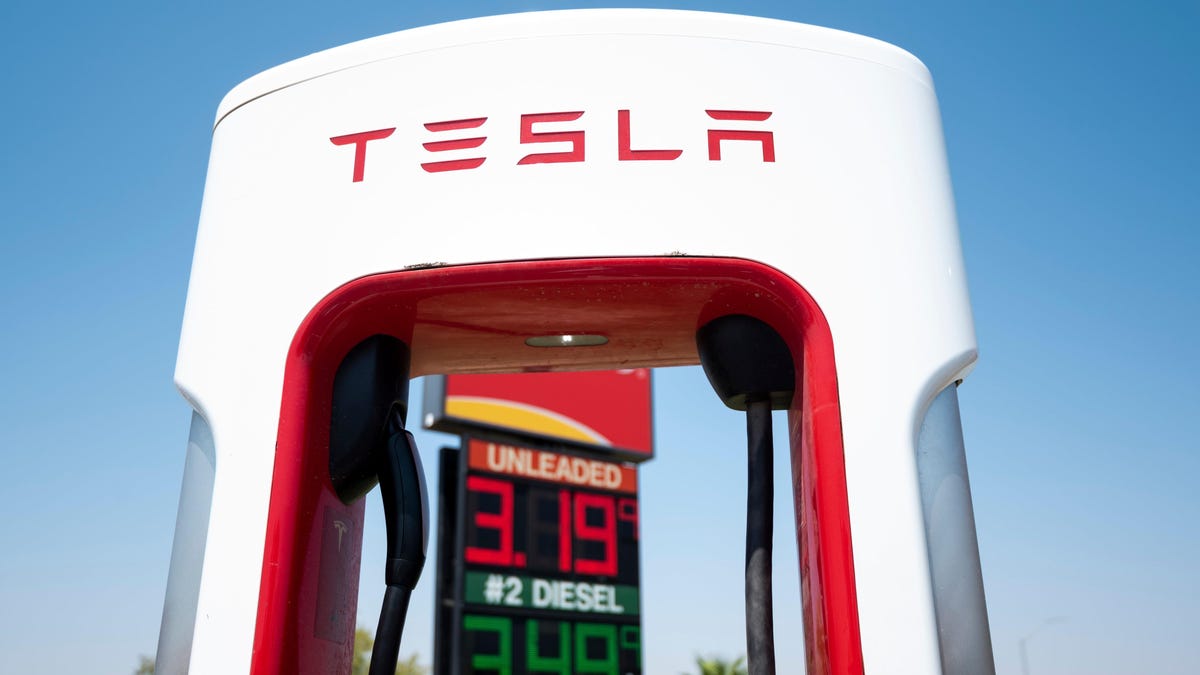How EVs Are Better For The Environment, By the Numbers

The showdown between EVs and ICE cars hinges on overall CO2 emissions. Photo: Bill Clark (Getty Images)
Now is a good time to ask whether EVs actually pollute less than ICE cars. Well, it’s always been a good time to ask, but now that the 2023 Chevy Bolt will offer a truly affordable electric car in America, the EV versus ICE debate is that much more relevant for drivers in the U.S., and the answer is all about CO2 emissions.
Comparing the carbon footprint of a popular EV, such as the Tesla Model 3, and a comparable gasoline-burning car, like the BMW 3-Series is a good start. So, CNET measured the CO2 per mile driven of the electric Model 3 against that of a gasoline-burning M340i. I encourage you to go read this deep dive into CO2 emissions, or maybe watch the thorough take on video:
It’s a little long, but that’s mostly because comparing EVs and ICE cars is not as simple as the auto industry claims. Don’t let marketing and advertising fool you. Indeed, there’s no free lunch: some form of pollution is inherent in making and driving EVs. Electric carmakers can coin catchy phrases with the word “zero” to absolve themselves of CO2 emissions all they want, but math is immune to ads.
Electric cars have no tailpipe emissions (or tailpipe at all), but that doesn’t mean EVs produce zero emissions. The source of the electricity that powers EVs, and transporting that power from grid to car, both produce CO2. Just how much of it depends on where you live in the United States.
The report gave EV skeptics the benefit of the doubt by choosing the dirtiest power grid in America, the Midwest Reliability Organization East. This section of the U.S. power grid relies mostly on coal and natural gas; clean, renewable energy sources only account for 14 percent of its power.
A Tesla Model 3 charged by this grid emits 210 grams of CO2 per mile, while the BMW M340i emits 269 grams of CO2 per mile. Huh. A difference of 69 grams seems kind of small. But that’s not accounting for the energy burned by getting the gasoline into the BMW’s tank, which the EPA says is one gallon for every four gallons of gas used. This means the BMW M340i emits a total of 336 grams of CO2 per mile, accounting for other factors.
To be fair to the BMW M340i, it’s important to account for the CO2 emissions of making the battery in the Tesla Model 3. The report estimates making the Tesla battery produces 5,500 kilograms (just over 12,000 pounds) of CO2. Not to mention the harm that comes from mining the raw materials needed.
Factoring in this less obvious source of carbon emissions, it would take the average American driver three years, or 47,413 miles, to offset the big battery in the Tesla Model 3. Again, that’s all assuming the EV is used in a dirty grid; the number goes down depending on the source(s) of energy in the grid. Still, even in a power grid using fossil fuels, at some point, the electric car emits less CO2 than the gasoline-burning car, and we can put that myth to rest.
Photo: Matt Cardy (Getty Images)




